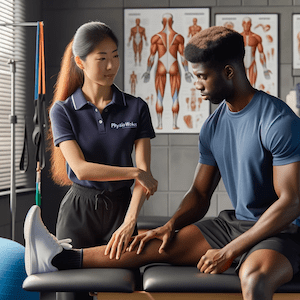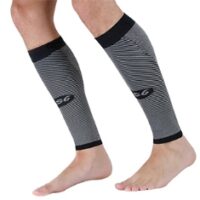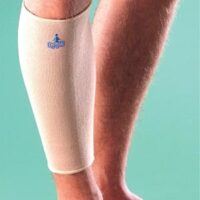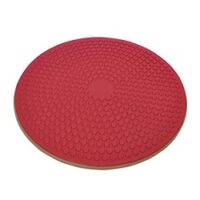Anterior Shin Splints: Understanding, Treating, and Preventing
Anterior Tibial Stress Syndrome (ATSS)
Anterior shin splints, a common issue among athletes and fitness enthusiasts, affect the lower legs, particularly the shins. From a physiotherapist’s perspective, we’ll discuss symptoms, causes, and treatment strategies, along with the latest research.
Why Do Anterior Shin Splints Occur?
Anterior shin splints cause pain along the front of the lower leg, around the shin bone or tibia. Overuse is the main reason, especially among runners and athletes involved in high-impact sports.
Symptoms of Anterior Shin Splints
Pain and tenderness along the shin bone. Swelling in the affected area. Stiffness or weakness in the legs, especially in the mornings or during exercise. For more detailed symptoms and related conditions, read about shin pain, shin splints or posterior shin splints.
What Causes Anterior Shin Splints?
The tibialis anterior muscle, responsible for lifting the foot, often becomes overworked. Contributing factors include:
- Rapid increase in physical activity
- Running on hard surfaces
- Improper foot biomechanics, like overpronation or supination
- Running in wet or heavy shoes
- Inadequate footwear
How to Differentiate from Tibial Stress Fractures
It’s essential to distinguish anterior shin splints from tibial stress fractures. Stress fractures involve actual bone damage and need more intensive treatment. Anterior tibial stress syndrome (ATSS) covers a spectrum from shin splints to significant tibial stress fractures. For a deeper understanding, read more about stress fractures.
Diagnosis: The Role of a Physiotherapist
Physiotherapists diagnose shin splints through medical history and physical exams. Imaging tests like X-rays or MRIs help rule out stress fractures. For more on diagnosis methods, read more.
Effective Treatment Approaches
1. Pain Reduction & Anti-inflammatory Phase:
- Rest and ice applications
- Anti-inflammatory medications
- Supportive taping
- Dry Needling
2. Regain Full Range of Motion:
- Restore normal ankle motion through manual joint techniques, specific exercises and stretches
3. Normalising Foot Biomechanics:
4. Muscle Strengthening:
- Focused exercises for the lower leg, calf, and other muscles
5. Modified Training and Return to Sport:
- Gradual reintroduction to sports based on individual needs
- Load management optimisation.
For a comprehensive guide on treatment, please consult your physiotherapist for individual guidance.

Prevention Strategies
Preventing anterior shin splints involves:
- Gradual increase in training intensity
- Wearing appropriate footwear
- Attention to foot biomechanics
- Proper warm-up and cool-down routines
- Optimal strength of the foot arch and lower leg musculature.
For detailed prevention strategies, read more.
Latest Research and Developments
Recent studies highlight the importance of comprehensive biomechanical assessment. Advances in physiotherapy techniques like targeted muscle training and gait analysis have shown promise. Read more: Anterior Tibial Stress Syndrome.
Conclusion
Anterior shin splints require careful attention and a structured treatment approach. Understanding the condition, following a physiotherapist-guided plan, and adhering to prevention strategies can lead to effective management.
What to Do?
If you experience symptoms of anterior shin splints, consult a physiotherapist. They can create a tailored treatment plan for a safe recovery. Timely intervention is key to preventing serious complications, such as stress fracture.
Rochedale - Call 38410277
Book Online: RochedaleSalisbury - Call 32751044
Book Online: SalisburySandgate - Call 32691122
Book Online: Sandgate
Anterior Shin Splints FAQs:
- What are anterior shin splints? Anterior shin splints refer to pain along the front of the lower leg, often due to overuse, especially in athletes.
- What causes anterior shin splints? Overuse of the tibialis anterior muscle, improper foot biomechanics, and inadequate footwear are common causes.
- How are anterior shin splints diagnosed? Physiotherapists use medical history, physical exams, and sometimes imaging tests like X-rays or MRIs to diagnose shin splints.
- What is the difference between shin splints and stress fractures? Shin splints cause pain due to muscle overuse, while stress fractures involve bone damage and require more intensive treatment.
- What are effective treatments for anterior shin splints? Treatments include rest, ice, anti-inflammatory medications, scar tissue management, orthotics, and gradual reintroduction to sports.
- How can I prevent anterior shin splints? Gradually increase training intensity, wear proper footwear, pay attention to foot biomechanics, and incorporate proper warm-up and cool-down routines.
Related Articles
- Managing Stress Fractures – Tips on distinguishing and treating stress fractures.
- Foot Biomechanics – Understanding the role of biomechanics in preventing injuries.
- Gait Analysis – How gait analysis can help in injury prevention.
- Targeted Muscle Training – Strengthening exercises to support your feet and lower leg health.
- Warm-Up Routines – Effective warm-up routines for athletes.
- Orthotic Solutions – Benefits of orthotics in managing shin splints.
- Physiotherapy Techniques – Latest advances in physiotherapy for sports injuries.
- Sports Rehabilitation – Comprehensive guide to sports injury recovery.
- Shin Splints: Symptoms, Causes, and Treatments – Healthline’s detailed overview on shin splints.
- Preventing Shin Splints in Runners – Runner’s World guide on prevention strategies.
- The Role of Biomechanics in Shin Splints – WebMD’s article on how biomechanics affect shin splints.
Social Media – Follow Us for Free Tips
Stay updated on the latest tips and strategies for managing and preventing anterior shin splints. Follow us on our social media platforms for regular insights and advice from our experienced physiotherapists.






















































